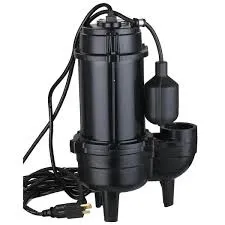English
- Afrikaans
- Albanian
- Amharic
- Arabic
- Armenian
- Azerbaijani
- Basque
- Belarusian
- Bengali
- Bosnian
- Bulgarian
- Catalan
- Cebuano
- Corsican
- Croatian
- Czech
- Danish
- Dutch
- English
- Esperanto
- Estonian
- Finnish
- French
- Frisian
- Galician
- Georgian
- German
- Greek
- Gujarati
- Haitian Creole
- hausa
- hawaiian
- Hebrew
- Hindi
- Miao
- Hungarian
- Icelandic
- igbo
- Indonesian
- irish
- Italian
- Japanese
- Javanese
- Kannada
- kazakh
- Khmer
- Rwandese
- Korean
- Kurdish
- Kyrgyz
- Lao
- Latin
- Latvian
- Lithuanian
- Luxembourgish
- Macedonian
- Malgashi
- Malay
- Malayalam
- Maltese
- Maori
- Marathi
- Mongolian
- Myanmar
- Nepali
- Norwegian
- Norwegian
- Occitan
- Pashto
- Persian
- Polish
- Portuguese
- Punjabi
- Romanian
- Russian
- Samoan
- Scottish Gaelic
- Serbian
- Sesotho
- Shona
- Sindhi
- Sinhala
- Slovak
- Slovenian
- Somali
- Spanish
- Sundanese
- Swahili
- Swedish
- Tagalog
- Tajik
- Tamil
- Tatar
- Telugu
- Thai
- Turkish
- Turkmen
- Ukrainian
- Urdu
- Uighur
- Uzbek
- Vietnamese
- Welsh
- Bantu
- Yiddish
- Yoruba
- Zulu
Telephone: +86 13120555503
Email: frank@cypump.com
Nov . 05, 2024 07:14 Back to list
clean water submersible pump
Clean Water Submersible Pumps Essential Tools for a Sustainable Future
In today’s world, access to clean water is crucial for health, agriculture, and industry. Among the innovations that facilitate this access is the clean water submersible pump, a device designed to efficiently draw water from deep underground sources and deliver it to the surface. These pumps are increasingly vital in various applications ranging from residential water supply to agricultural irrigation.
Understanding Submersible Pumps
A submersible pump is designed to function while submerged in water. Unlike standard pumps that draw water from above, submersible pumps push water to the surface using a hermetically sealed motor. This design minimizes cavitation and allows for efficient operation even in deeper wells. The primary components include a motor, pump, and integral housing that protects the internal mechanisms from water and contaminants.
Applications of Clean Water Submersible Pumps
The versatility of submersible pumps means they can be employed in numerous areas
1. Residential Use For homeowners relying on wells for water, submersible pumps offer a reliable means to access clean water. They can be installed at varying depths, ensuring that even those in arid regions can secure a constant water supply.
clean water submersible pump

2. Agricultural Irrigation Farmers increasingly utilize clean water submersible pumps to irrigate crops. With these pumps, water can be drawn from aquifers and surface water sources to ensure crops receive the hydration necessary for growth. This method is particularly useful in drought-prone areas.
3. Construction and Industry In construction projects, submersible pumps are employed to remove water from excavations and foundations. Similarly, industries use them to maintain water levels in basements, ponds, and other water bodies, ensuring smooth operations.
4. Environmental Protection Clean water submersible pumps play a role in environmental management, particularly in restoring wetlands and flood control. By managing water levels, these pumps help preserve ecosystems and prevent flooding.
Choosing the Right Pump
Selecting an appropriate submersible pump involves considering various factors, including the depth of the water source, flow rate requirements, and the quality of the water being pumped. Submersible pumps are categorized based on their horsepower and head capacity. High-quality materials are essential to ensure durability and efficiency, especially in harsh conditions. Additionally, many modern pumps feature energy-efficient designs and integrated smart technology that allows for remote monitoring and operation.
Conclusion
In conclusion, clean water submersible pumps are essential tools that demonstrate technological advancement in the quest for reliable water access. Their applications in residential, agricultural, industrial, and environmental settings underline their importance in sustainable water management. As we continue to innovate and adapt to the challenges posed by climate change and population growth, submersible pumps will undoubtedly play a crucial role in ensuring that clean water remains available for all, contributing to a healthier, more sustainable future. Investing in these technologies aligns with broader goals of sustainability and resource conservation, preparing society to meet its water needs better.
-
ISG Series Vertical Pipeline Pump - Chi Yuan Pumps Co., LTD.
NewsJul.30,2025
-
ISG Series Vertical Pipeline Pump - Chi Yuan Pumps Co., LTD.|energy-efficient fluid handling&industrial durability
NewsJul.30,2025
-
ISG Series Vertical Pipeline Pump - Chi Yuan Pumps | Advanced Engineering&Industrial Efficiency
NewsJul.30,2025
-
ISG Series Pipeline Pump - Chi Yuan Pumps | High Efficiency, Energy Saving
NewsJul.30,2025
-
ISG Series Vertical Pipeline Pump-Chi Yuan Pumps|High Efficiency&Reliable Performance
NewsJul.29,2025
-
ISG Series Vertical Pipeline Pump|High Efficiency&Low Noise
NewsJul.29,2025










